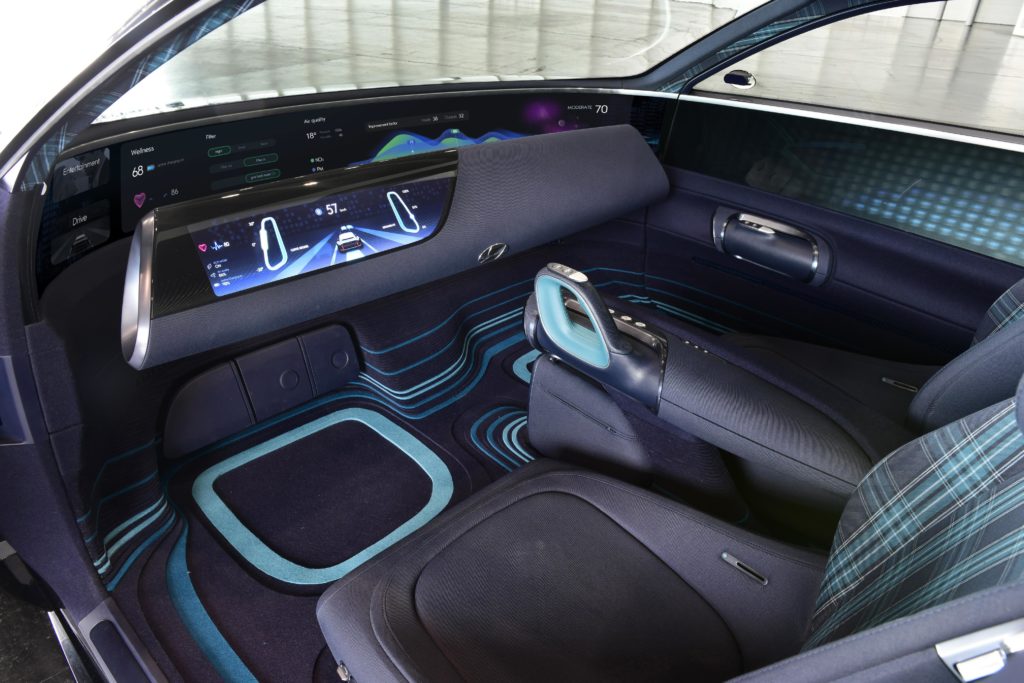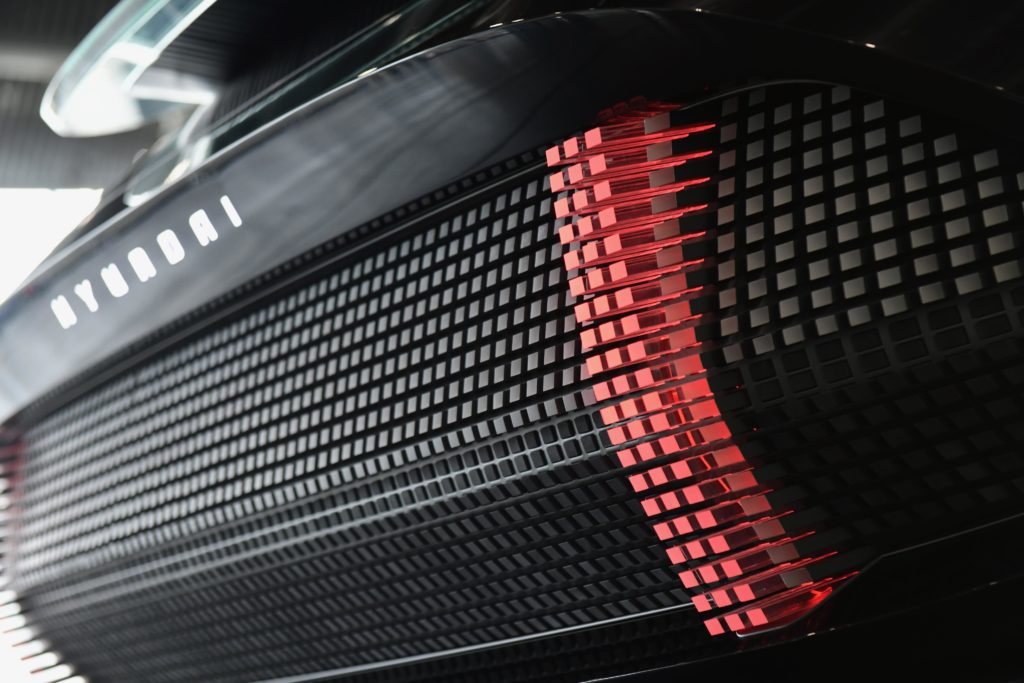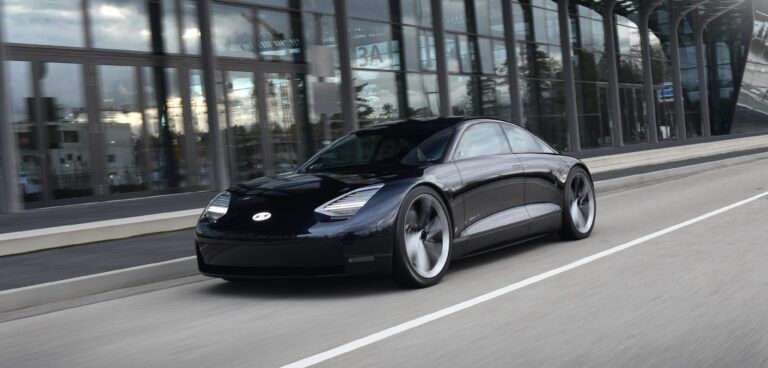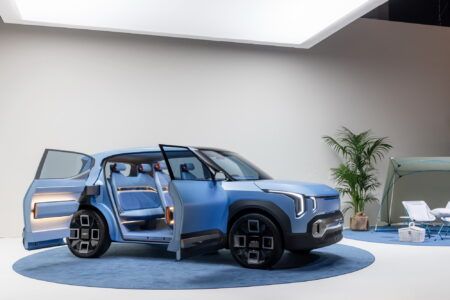Hyundai Motor has revealed more details of its Prophecy Concept EV. In a new walk-around video, Hyundai Motor Group’s Chief Design Officer Luc Donckerwolke explains some of the key features inside and outside the vehicle.
Prophecy received its digital premiere last month. Rather than being a pure concept, its name refers to the fact that this vehicle teases ideas and features Hyundai will develop in the future.
One of the most unique characteristics of Prophecy is the steering mechanism. Rather than a steering wheel mounted high on the dashboard in front of the driver, Prophecy is controlled by dual joysticks located left and right from the driver: one on the center console and the other on the door trim. In combination with a spacious interior, this not only allows for a more comfortable seating position while driving, it also frees up more space on the dashboard for other features. In addition, 90% of the vehicle’s functions can be controlled via buttons on the joysticks, so there is no need for the driver to take their hands off the joysticks to change the music. This ergonomic setup is known as the Intuitive Human Interface. It has the benefit of increasing passenger safety as well as visual freedom.

Installing joysticks is not the only way the seating position has become more ergonomic with Prophecy. The new Smart Posture Care System (SPCS) allows drivers to enjoy an optimized seating position based on their individual physical characteristics. The driver can either adjust the seat manually to fit their preferences, or allow the car to suggest a “smart” seating position for them. In “smart” mode, the driver enters their height, seated height, and weight, and the car automatically adjusts to the driver’s individual physical condition. The SPCS controls the seat, steering wheel, mirror, and Head-Up Display, and is based on medically-verified information.
The infotainment system is integrated into a large screen stretching across the entire front of the vehicle’s interior. When not driving, the car can be used as an entertainment space by switching into Relax Mode. In Relax Mode, the seats recline and the dashboard swivels upwards, creating the optimal seating position from which to enjoy the content shown on the display. Because of the lack of a steering wheel, the occupants have virtually zero visual obstacles – they see only the horizontal pillar-to-pillar display and the wing-shaped dashboard. As autonomous driving technology progresses, the potential for vehicles to be used as relaxation spaces will grow in importance.
Not only is Prophecy a zero-emissions electric vehicles – it actually cleans the air. This is thanks to a unique air filtration system with a fine dust sensor built into the vehicle. When particle levels inside the vehicle get too high, the air system activates, taking in fresh air from the outside, filtering it for purity, and circulating the clean air throughout the vehicle. Moreover, this does not just happen when the car is driving – Prophecy continues to clean the air, even when it is idling or charging, and even if no one is inside.

In most cars, the driver or passenger rolls down the window when they want a breath of fresh air. With Prophecy, the air is always fresh, so the windows of dual-pane glass are locked in place. When the air inside the vehicle grows stale, fresh air is taken in via intake valves at the front of the vehicle. When no fresh air inside the car is needed, the filtered air is pumped back into the outside world via two outlets at the bottom of the side doors. This system is significantly more energy efficient than a traditional ventilation system.
After 45, Prophecy is the second Hyundai vehicle to be built using the Electric Global Modular Platform or “E-GMP” – Hyundai’s first dedicated EV platform. A dedicated EV platform opens up a world of possibilities for new design and comfort features. Electric powertrains are much more compact than their internal-combustion counterparts, meaning there is no need for a wide front hood or a bulky center console. This allows automotive designers to reclaim the space for passenger use, and to reimagine the range of in-car experiences.





